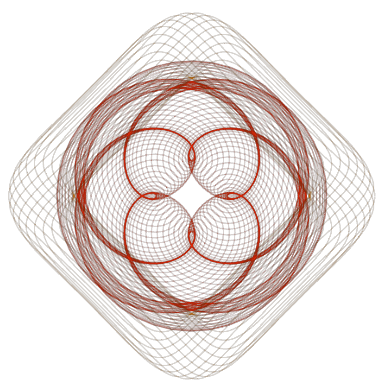
The spirographs above were created by a genetic algorithm. A collection of 36 compositions is generated at random and placed (by me) into three categories: top, mid, and bottom tier. Pulling most often from the top tier, second most from the mid, and least often from the bottom tier, a random sample of compositions (allowing for duplicates) is drawn from the 36. These selections are carried forward to the next generation. Within each new generation, individual compositions trade some of their parameter values (genetic code) with another composition and then some random mutations are inserted. The code-swap provides cross polarization, allowing attributes to be shared among the population. Mutations inject new twists, sometimes favorable, sometimes not so much. The resulting 36 compositions are then viewed and sorted to evolve the next generation.


Typically, in a genetic algorithm, an automated scoring algorithm would determine the fitness of each composition. The human involvement in the process allows the evolution to proceed more editorially.
It is a quick way to visually search through a parameter space. By selectively upvoting compositions of interest, one can create a population with variations on themes of interest. The process is a collaboration between algorithms, tools, and the composer.

